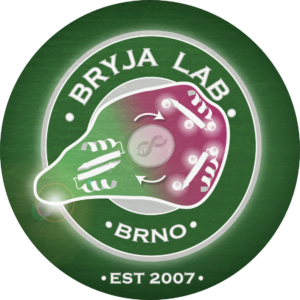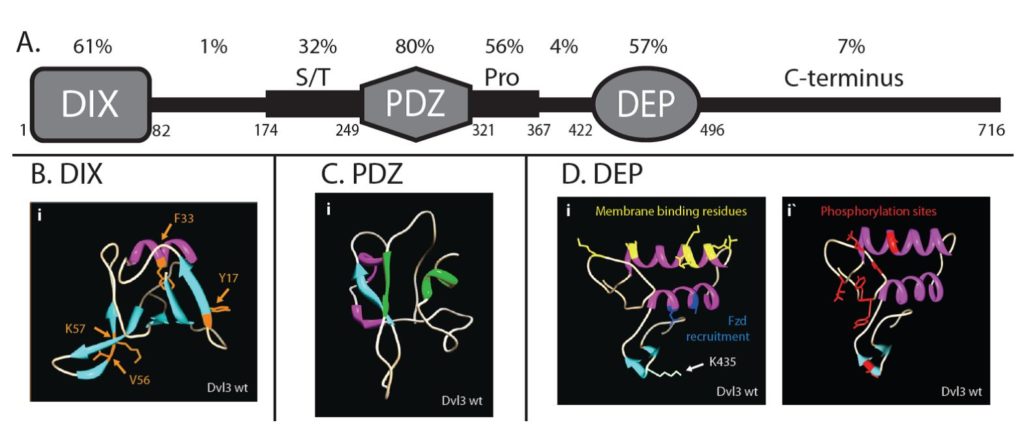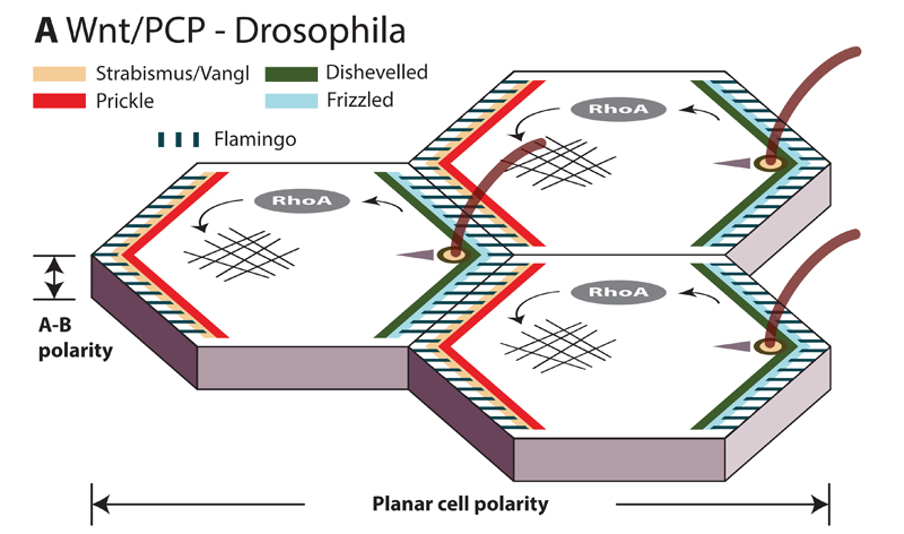Vítězslav Bryja – Laboratory of Cellular Communication
Introduction
Morphogenetic proteins from the Wnt family are important regulators of embryonal development. They have also huge impact on homeostasis regulation of the adult organism. Deregulation of Wnt pathway is associated with cancer and many other diseases. Although the significance of this family of proteins in the pathogenesis of diseases is widely accepted, we do not know much about the molecular mechanisms of their effect.

Our laboratory attempts to contribute to understanding of some key molecular aspects of transduction of the Wnt signal between the Frizzled receptor, the protein Dishevelled (DVL) and other proteins in the Wnt signaling, mainly Casein kinase 1 epsilon (CK1e). We believe these findings will become the basis for identification of new therapeutic targets for curing the tumors caused by the Wnt pathway deregulation.
To study Wnt signaling we use all basic methods of biochemistry and molecular and cell biology and rely heavily on the most state-of-the-art proteomics and genomics. We frequently use the primary patient samples, which we obtain in cooperation with the Faculty Hospital Brno. Alone or in collaboration we are trying to take advantage of data validation in vivo using Caenorhabditis elegans, Xenopus laevis and Mus musculus as experimental models.
Our research can be roughly classified into four, mutually interconnected, topics:
1) Biochemistry and biology of Dishevelled (DVL) protein
Wnt proteins bind to the membrane receptors from the Frizzled family that transduce the signal onto the phosphoprotein Dishevelled (DVL) that directs signal towards one of several downstream signaling pathways. Molecular mechanisms determining how DVL performs its channeling function have not been discovered yet. It is believed that DVL phosphorylation, subcellular localization and conformation holds the key to understanding of its function. Using proteomics we attempt to crack DVL phosphorylation code, especially the code induced by Casein kinase 1 (CK1). We implement many in-house derived unique tools and modern approaches (CRISPR-Cas9 knock-out technology, whole proteome analysis, FRET sensors etc.) to validate our findings functionally in the context of a living cell.

2) Mechanistic understanding of the mammalian planar cell polarity (PCP) pathway
Cell polarization is a prerequisite for the control of cell shape, directional migration, asymmetric cell division and function of cells within complex tissues. One of the key pathways, which controls cell polarity and subsequently all the processes mentioned, is the non-canonical Wnt/PCP (planar cell polarity) pathway. The Wnt/PCP pathway controls migration and polarity in development of all multicellular organisms from cnidarians to men. Despite clear clinical importance of the Wnt/PCP pathway, surprisingly little is known about the biochemical details of the signal transduction – this in turn prevents its efficient pharmacological inhibition/activation in the pathological conditions. To reveal the biochemical changes associated with the activation of the PCP pathway we use the combination of a panel of PCP-deficient cell lines (generated by Crispr/Cas9) and advanced proteomics (IP/MS, BioID etc.). Subsequently, we functionally analyze how these mechanisms control asymmetric localization of PCP proteins in living cells and design screens for novel regulators which disrupt PCP signaling and block motility of migrating cancer cells.

3) Role of Wnt signaling in the Chronic Lymphocytic Leukemia (CLL)
Our lab has shown recently that the PCP signaling pathway drives pathogenesis of Chronic Lymphocytic Leukemia (CLL) by controlling migration of CLL cells and their interaction with the microenvironment. Other labs have described similar role of the PCP pathway in other pathological situations such as metastatic spread. Targeting PCP signal transduction, in our hands mainly via innovative inhibitors of Casein kinase 1 (CK1), thus represents a novel way of intervention for these largely incurable conditions. In this regard, we are trying to understand in detail the importance of PCP pathway for CLL. Namely, we aim to uncover its role in the CLL cell polarization and migration and in the communication of CLL cells with their environment. We actively explore the possibility to pharmacologically interfere with the PCP pathway and develop small compounds with this capacity.

4) Extracellular vesicles in ovarian cancer and the potential of malignant ascites for ovarian cancer research
Ovarian cancer (OC) ranks among the deadliest cancers in women. Lack of symptoms, rapid metastases and common chemoresistance contribute to unfortunate fate of majority of OC patients, especially those having high-grade serous carcinoma of the ovary, fallopian tube and peritoneum (HGSC), the most common and most aggressive type of OC. Many HGSC patients have excess fluid in the peritoneum called ascites. Ascites is basically a tumor microenvironment (TME) containing various cells, proteins and extracellular vesicles (EVs).
EVs play an important role in cancerogenesis and hold great promise as disease biomarkers, yet their small size and polydispersity bring various challenges to their isolation and characterization, including method-dependent enrichment of different EV subtypes as well as contaminants.
Our research projects focus on method development in the field, comparison of different isolation methods and especially on proteomic analyses of ascitic EVs and how these can help in unraveling the underlying molecular principles of disease progression and how can ascites serve as a new source of diagnostic/screening/prognostic EV-based biomarkers of HGSC and clinically relevant disease models.
We are proud members of the International Society for Extracellular Vesicles (ISEV) and co-founders of Czech Society for Extracellular Vesicles (CzeSEV).
























